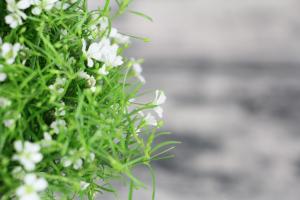Introduction to Potted Plants
Potted plants are a great way to add some natural beauty to any indoor or outdoor space. They come in various shapes and sizes, and with some care and attention, they can provide a beautiful and calming atmosphere. In this article, we will discuss how to do potted plants and some tips for keeping them healthy and beautiful.
Choosing the Right Pot and Soil
Choosing the right pot and soil for your potted plant is the first step in ensuring its health and longevity. The pot should have drainage holes at the bottom to prevent waterlogging. The soil should also be well-draining and nutrient-rich, as this will help the plant grow strong and healthy.
Choosing the Right Placement
Placement is critical when it comes to potted plants. Different plants have different requirements for light and temperature, so it's important to choose a location that best suits the plant's needs. Some plants thrive in bright, direct sunlight, while others prefer indirect or filtered light. Similarly, some plants prefer warmer temperatures, while others prefer cooler ones.
Watering and Fertilizing
Regular watering and fertilizing are essential for the growth and health of potted plants. Overwatering can lead to root rot, while under watering can cause the plant to wilt and die. It's important to water the plant thoroughly and regularly, ensuring that the topsoil is moist but not waterlogged. Fertilizing also plays a vital role in plant growth, and it's recommended to feed the plants with a water-soluble fertilizer once or twice a month during the growing season.
Pest and Disease Control
Potted plants are prone to pests and diseases, and it's important to keep an eye out for any signs of trouble. Common pests include spider mites, scale insects, and mealybugs, while common diseases include root rot and powdery mildew. Regularly inspecting the plants and taking measures such as treating with insecticides or fungicides can help prevent infestations.
Pruning and Repotting
Pruning and repotting are necessary for keeping potted plants healthy and vigorous. Regular pruning helps remove dead or damaged stems, encourages new growth, and helps maintain the plant's shape. Repotting is necessary when the plant outgrows its current pot or the soil has become depleted of nutrients. When repotting, it's important to choose a pot that is slightly larger than the previous one and use fresh soil.
Conclusion
In conclusion, potted plants are a great way to add some natural beauty to any space, and with some care and attention, they can provide a beautiful and calming atmosphere. By choosing the right pot and soil, placing the plant in the right location, watering and fertilizing regularly, controlling pests and diseases, pruning and repotting when necessary, you can ensure the health and longevity of your potted plants.

 how many times do yo...
how many times do yo... how many planted tre...
how many planted tre... how many pine trees ...
how many pine trees ... how many pecan trees...
how many pecan trees... how many plants comp...
how many plants comp... how many plants can ...
how many plants can ... how many plants and ...
how many plants and ... how many pepper plan...
how many pepper plan...





























